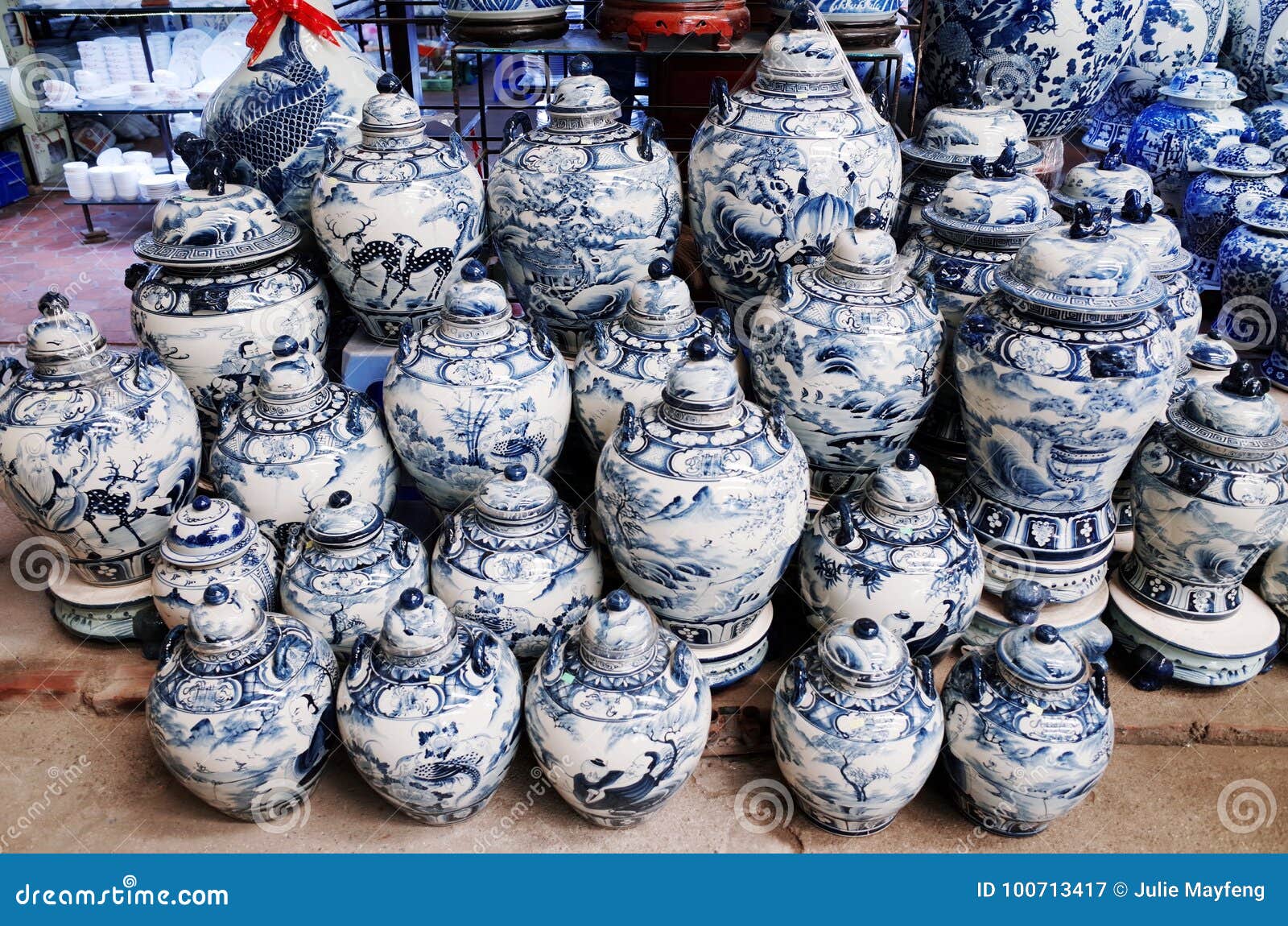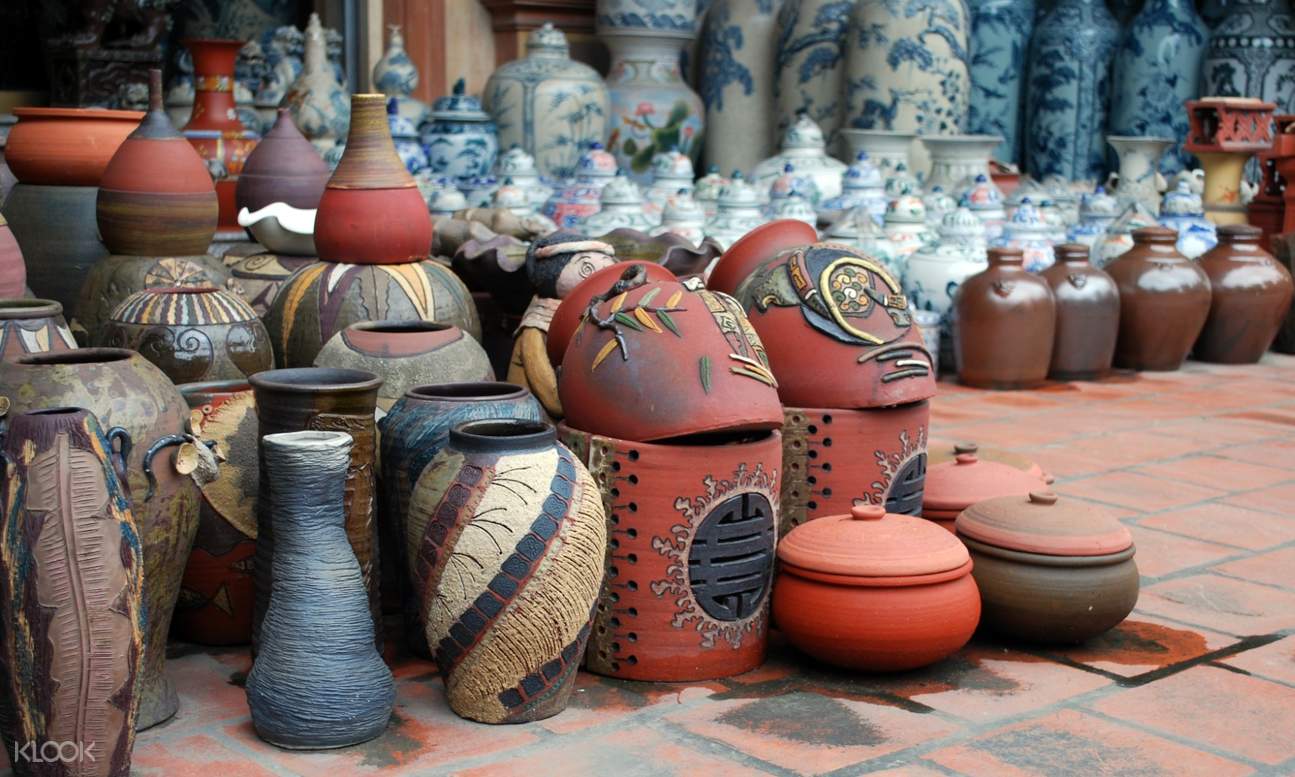News
Delve into the Evolution of Bat Trang Ceramics Techniques
Bat Trang ceramics, a symbol of Vietnam’s rich cultural heritage, have captivated art enthusiasts and collectors worldwide for centuries. Known for their exquisite craftsmanship, unique glazing techniques, and vibrant decorative motifs, Bat Trang ceramics embody the harmonious blend of tradition and innovation. This article explores the fascinating evolution of Bat Trang ceramics techniques, tracing their historical roots, technical advancements, artistic transformations, and contemporary adaptations that continue to keep this ancient craft alive and thriving.
Historical Foundations of Bat Trang Ceramics

The origin story of Bat Trang ceramics is deeply intertwined with the socio-cultural and economic fabric of northern Vietnam, particularly around the Red River Delta. This section unpacks the early beginnings and historical contexts which laid the groundwork for the development of ceramic artistry in Bat Trang village.
Before diving into specific sub-techniques, it’s important to understand the historical backdrop against which Bat Trang ceramics flourished. From its inception during the Ly Dynasty (11th century) to its golden ages under various Vietnamese dynasties, the village has continuously adapted and evolved, reflecting broader societal shifts.
The Birthplace of Bat Trang Pottery
Bat Trang village, located near Hanoi, is renowned as one of the oldest pottery villages in Vietnam, with archaeological evidence dating back nearly 700 years. The natural abundance of high-quality white clay deposits in the region provided an ideal raw material foundation, fostering the emergence of ceramic production.
The villagers’ intimate relationship with the land enabled them to develop unique clay preparation methods essential for crafting durable pottery. This reliance on local materials not only influenced the texture and durability of the ceramics but also played a crucial role in defining the aesthetic standards of Bat Trang pieces.
The communal nature of production, where families passed down knowledge from generation to generation, helped preserve traditional techniques while allowing subtle innovations over time. This blend of continuity and change is a hallmark of Bat Trang ceramics’ enduring legacy.
Influence of Dynastic Eras on Ceramic Styles
Throughout different Vietnamese dynasties, Bat Trang ceramics reflected prevailing artistic and cultural norms, adapting both functionally and decoratively. During the Tran and Le dynasties, for instance, ceramics were heavily influenced by Buddhist iconography and Confucian ideals, leading to the incorporation of spiritual motifs and symbolic patterns.
The Nguyen dynasty, being the last imperial dynasty, also left its imprint on Bat Trang ceramics through increased refinement in glazing techniques and better kiln designs. The royal patronage inspired artisans to experiment with richer colors and more sophisticated shapes, elevating the status of Bat Trang ceramics from mere utilitarian objects to works of art.
Each era introduced new elements—whether in form, decoration, or firing processes—that collectively narrate the evolution of Bat Trang ceramics across centuries.
Early Techniques and Kiln Technologies
In the earliest stages, Bat Trang potters utilized rudimentary kilns, typically wood-fired dragon kilns built along riverbanks. These long, sloping kilns allowed for efficient heat distribution and higher firing temperatures necessary for vitrification—the process that hardens ceramics and renders them water-resistant.
Potters mastered the control of firing atmospheres inside the kiln, toggling between oxidation and reduction environments to affect glaze colors. Natural ash glazes created unintentionally during firing often led to serendipitous finishes, sparking creative experimentation.
Clay preparation was meticulous; impurities were removed by hand, and mixtures were refined to achieve optimal plasticity. Hand-shaping techniques such as coiling and slab building preceded the adoption of the potter’s wheel, which revolutionized production speed and uniformity.
Understanding these foundational methods provides a crucial lens through which we appreciate the complexity and ingenuity of Bat Trang ceramics’ early evolution.
Technical Advancements in Bat Trang Ceramics Production

As demand and artistic ambitions grew, Bat Trang artisans incorporated technological innovations that enhanced both efficiency and quality. This section explores the key technical developments that marked significant progress within the Bat Trang ceramics tradition.
Technological evolution in Bat Trang ceramics cannot be separated from changes in kiln designs, glazing chemistry, and shaping tools. These advancements not only ensured functional improvements but also expanded creative possibilities.
Modernization of Kiln Systems
Traditional dragon kilns gradually gave way to more compact, temperature-controlled kilns. The introduction of gas and electric kilns in the 20th century allowed potters to maintain consistent firing conditions, reducing defects and enabling complex glaze effects impossible in earlier setups.
These modern kilns facilitate precise temperature ramping schedules, critical for achieving desired glaze textures and color saturation. The shift also reduced environmental impact compared to wood-firing, aligning with global trends toward sustainable artisan production.
Moreover, kiln modernization made it feasible to fire larger batches simultaneously, increasing output without compromising quality—a vital transition for Bat Trang ceramics as they expanded into international markets.
Innovations in Glazing Techniques
Glazing represents a major domain of technical experimentation in Bat Trang ceramics. Early glazes were primarily ash-based or lead-glazed, but concerns about toxicity and aesthetics drove potters to explore alternative formulations.
The adoption of celadon glazes, characterized by their translucent greenish-blue hues, marked a significant leap influenced by Chinese Song Dynasty ceramics. This style became a signature of Bat Trang ware, appreciated for its depth and subtlety.
Contemporary artisans now experiment with matte, satin, and crystalline glazes, pushing boundaries in texture and finish. The integration of mineral oxides like cobalt and manganese enables more vivid and varied color palettes, broadening expressive possibilities.
Development of Pottery Tools and Shaping Methods
While the traditional potter’s wheel remains central, Bat Trang potters have embraced a variety of shaping tools and molds to diversify product forms. Slip casting, for instance, allows the replication of intricate designs previously difficult to achieve by hand.
Hand-carving tools have evolved from simple knives to precision instruments capable of detailed engraving and relief work. This enhances decorative complexity and texture, contributing to the distinctiveness of each piece.
Innovative shaping methods combined with advanced toolsets empower artisans to balance mass production with handcrafted uniqueness, preserving Bat Trang ceramics’ artisanal value amid growing industrial pressures.
Artistic Transformations and Decorative Motifs

Beyond technical prowess, the evolution of Bat Trang ceramics is vividly illustrated through shifts in artistic styles and decorative themes. This section investigates how cultural narratives, symbolism, and aesthetic preferences shaped the visual language of Bat Trang ceramics over time.
Decoration serves as both an artistic expression and cultural communication medium, embedding stories and meanings into ceramic surfaces.
Traditional Motifs and Symbolism
Early Bat Trang ceramics prominently feature motifs drawn from nature, folklore, and spirituality. Lotus flowers symbolize purity and enlightenment; dragons represent power and protection; phoenixes evoke rebirth and prosperity.
Such iconography reflects deep-rooted Vietnamese beliefs and aspirations. These motifs are meticulously hand-painted or carved, offering a tactile connection between artist and viewer.
The use of repetitive geometric patterns and stylized flora also speaks to a broader East Asian artistic vocabulary, situating Bat Trang ceramics within a regional aesthetic continuum while retaining a uniquely Vietnamese identity.
Influence of Western Aesthetics
During the French colonial period, exposure to European art styles influenced Bat Trang ceramics’ ornamentation. Art Nouveau and Art Deco elements began appearing, blending with traditional designs to create hybrid aesthetics.
This cross-cultural interaction introduced bolder color contrasts, abstract motifs, and asymmetrical compositions, challenging conventional symmetry and restraint.
Such stylistic fusion broadened the appeal of Bat Trang ceramics to foreign markets, positioning them as collectibles that embodied both local authenticity and cosmopolitan sophistication.
Contemporary Artistic Expressions
Modern Bat Trang artists increasingly experiment with avant-garde forms and unconventional decorations. Collaborations with contemporary designers have resulted in minimalist shapes, graphic prints, and mixed-media incorporations.
This trend reflects a desire to engage younger audiences and global consumers who seek art that resonates with current sensibilities while honoring heritage.
The rising popularity of batik-inspired painting, digital design transfers, and innovative surface treatments exemplifies how Bat Trang ceramics remain a living art form—dynamic, responsive, and forward-looking.
Cultural and Economic Impact of Bat Trang Ceramics
The evolution of Bat Trang ceramics techniques has not only shaped the artistic landscape but also significantly impacted local communities and Vietnam’s economy. This section assesses the socio-economic dimensions underpinning this craft’s persistence and growth.
Understanding the broader implications enriches appreciation of Bat Trang ceramics beyond aesthetics, highlighting its role as a catalyst for cultural preservation and economic empowerment.
Sustaining Local Traditions and Community Identity
Bat Trang ceramics serve as a cornerstone of village identity, fostering communal pride and cohesion. Craftsmanship is transmitted through family lineages and apprenticeships, ensuring continuity of specialized skills.
Ceramics festivals, workshops, and museums established locally reinforce cultural awareness and engagement among residents and visitors alike.
This intergenerational transfer of knowledge safeguards intangible heritage, helping Bat Trang maintain its distinctive character amid globalization’s homogenizing forces.
Economic Contributions and Global Market Integration
Bat Trang ceramics contribute substantially to the local economy by generating employment and incomes for thousands of artisans and allied workers. The village has become a major hub for ceramic exports, with products reaching Asia, Europe, and North America.
Strategic marketing efforts emphasize the handmade quality and cultural significance of Bat Trang wares, appealing to niche markets valuing craftsmanship and authenticity.
Government support programs promoting tourism and craft entrepreneurship further bolster the industry’s resilience, enabling adaptation to changing consumer demands and competitive pressures.
Challenges and Future Prospects
Despite successes, Bat Trang ceramics face challenges including raw material depletion, competition from mass-produced imitations, and shifting consumer tastes.
Sustainable resource management, intellectual property protections, and innovation in design and production are critical to addressing these issues.
Emerging trends such as eco-friendly ceramics and digital commerce offer promising avenues for growth, ensuring Bat Trang ceramics continue to evolve while honoring their storied past.
Contemporary Innovations and Sustainable Practices in Bat Trang Ceramics
The latest phase in the evolution of Bat Trang ceramics involves integrating sustainability and technology, reflecting broader global movements toward environmentally-conscious production and digital connectivity. This section highlights how Bat Trang artisans navigate these frontiers.
Adapting traditional crafts to modern expectations requires balancing respect for heritage with openness to change, an endeavor Bat Trang ceramicists approach with creativity and pragmatism.
Eco-Friendly Materials and Firing Techniques
Recent initiatives prioritize reducing environmental footprints by adopting sustainable clay harvesting practices and non-toxic glaze formulations.
Experimentation with solar-powered kilns and alternative fuels decreases dependency on wood and fossil fuels, mitigating deforestation and air pollution.
This ecological mindfulness aligns Bat Trang ceramics with global sustainability goals, enhancing their appeal in conscientious consumer markets.
Digital Design and Marketing Platforms
The advent of digital tools empowers Bat Trang artisans to innovate in design conceptualization using computer-aided design (CAD) software and 3D modeling.
Online platforms facilitate direct-to-consumer sales, storytelling, and brand building, expanding reach beyond traditional retail channels.
Social media enables dynamic engagement with customers, cultivating communities that appreciate and support Bat Trang ceramics’ authentic craftsmanship.
Collaborative Projects and Cultural Exchange
Partnerships between Bat Trang artisans, contemporary artists, designers, and academic institutions foster cross-disciplinary innovation.
Residency programs and international exhibitions promote cultural exchange, exposing Bat Trang ceramics to diverse influences and feedback.
Such collaborations invigorate the craft, injecting fresh perspectives while reinforcing its relevance in a rapidly changing world.
Conclusion
The evolution of Bat Trang ceramics techniques is a testament to the enduring spirit of creativity, cultural fidelity, and adaptability embedded within this historic craft. From its humble origins rooted in natural clay deposits and ancestral know-how to its embrace of technological advancements, artistic reinvention, and sustainable innovation, Bat Trang ceramics reflect a rich tapestry of history and modernity. Their journey underscores the dynamic interplay between tradition and transformation, revealing how a community’s identity and economic vitality can be intricately woven into the fabric of artistic expression. As Bat Trang ceramics continue to captivate global audiences, they stand not only as beautiful objects but as living embodiments of Vietnamese heritage and ingenuity.
